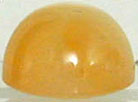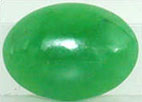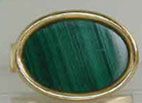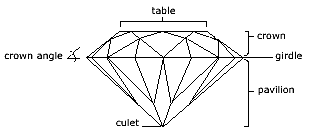Colored Gemstones - Cut
Shaping the Stone
Gemstones are cut to show them to best advantage. For many richly colored
stones, a smooth rounded shape or a flat polished surface does this best.
Indeed, cabochon is the oldest gemstone cutting.
 |
 |
 |
moonstone |
jade |
malachite |
Transparent gems, such as emerald and ruby, are usually faceted to show them
to best advantage.
 |
 |
 |
emerald |
garnet |
amethyst |
In faceting, planes are cut into the surface of the stone. The purpose is
to let light pass through and be reflected and refracted from faces on the
back of the stone.
These are some of the many shapes for faceted gems (top and side views).
|
|
 |
 |
 |
 |
|||
| Round Brilliant Cut |
Emerald Cut |
Baguette Cut |
Marquise Cut |
 |
 |
 |
 |
| Oval Cut |
Flanders Cut |
Princess Cut |
Pear Cut |
The shape of a gem should not be confused with its cut, or cut proportions. Shape is a matter of taste and style of jewelry, but cut is one of the “4Cs” that determine a gem’s value.
Cut Proportions
The diagram shows the facets of a round stone, viewed from the side.

When light strikes a faceted gem, it reflects and refracts on the faces of the stone, and returns to the viewer’s eye. The faceted cuts are precisely designed to show off the gem. Poorly proportioned gems retain more weight but their sparkle and richness of color are diminished.
In faceting, waste is unavoidable. For a well cut gem, the average weight loss from the rough stone is about 50%. Many stones are poorly cut to retain weight, because carat weight is what most buyers value. But a well proportioned gem has a higher value than a poorly proportioned gem of similar weight.

